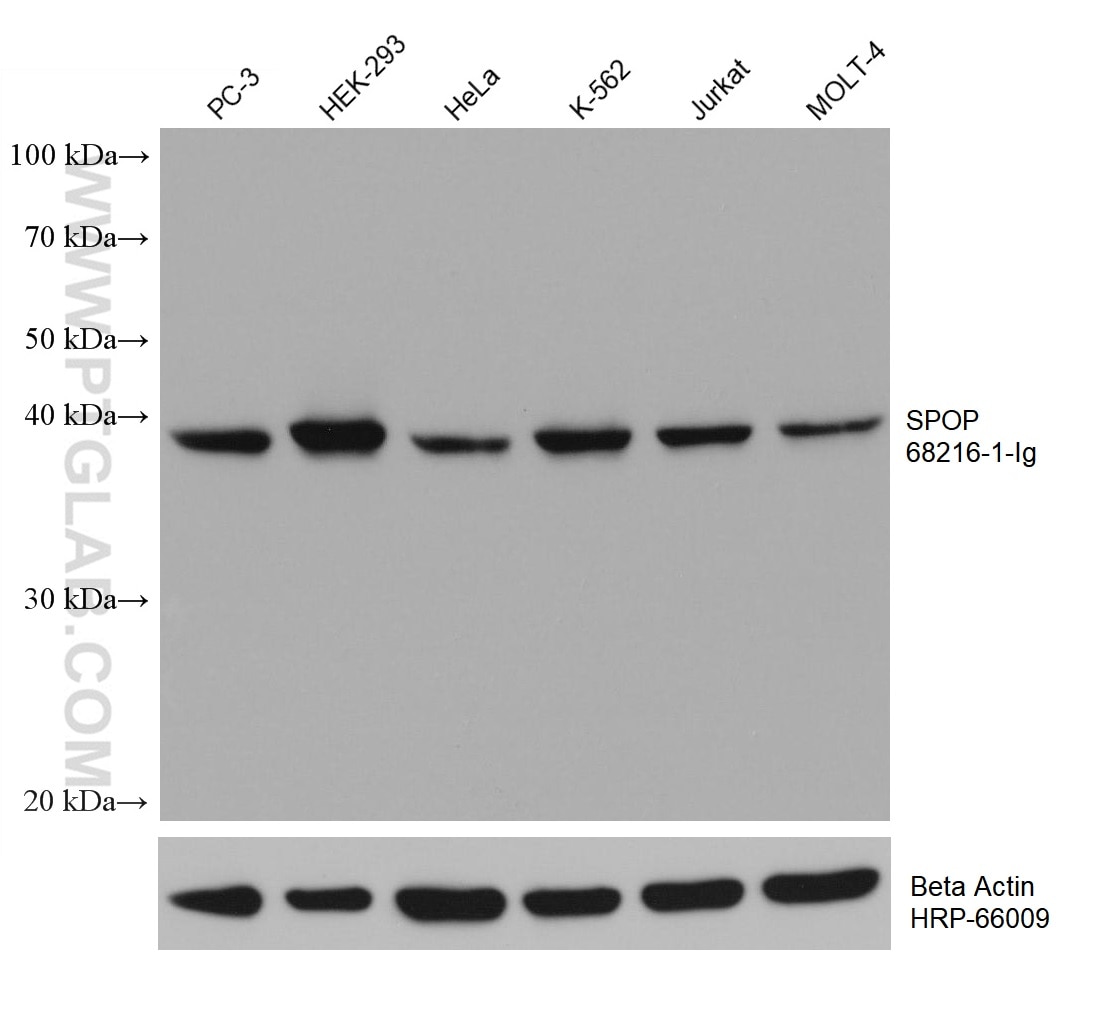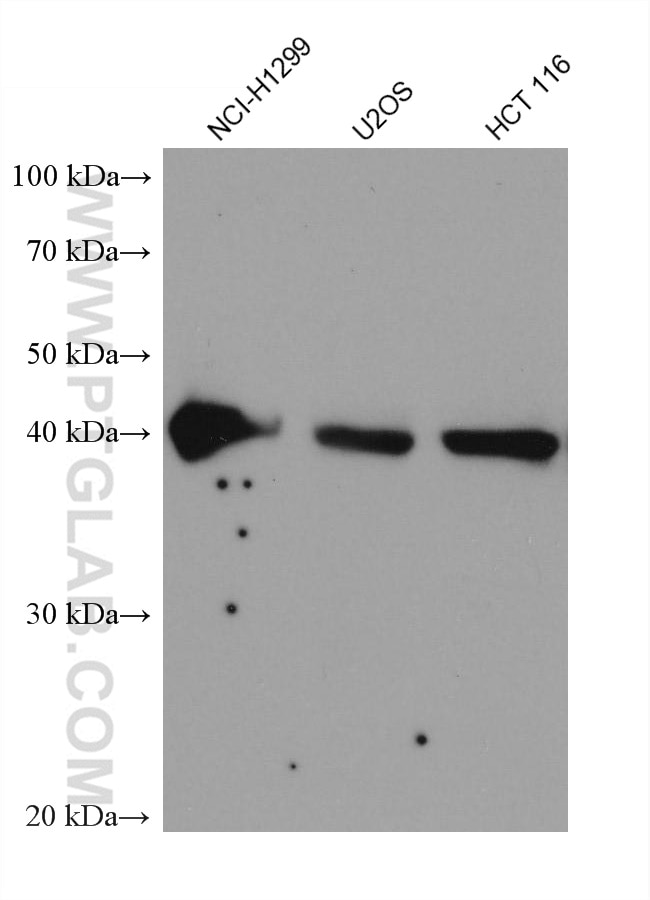SPOP Monoclonal antibody
SPOP Monoclonal Antibody for WB, ELISA
Host / Isotype
Mouse / IgG1
Reactivity
Human
Applications
WB, ELISA
Conjugate
Unconjugated
CloneNo.
2B9F2
Cat no : 68216-1-Ig
Synonyms
Validation Data Gallery
Tested Applications
| Positive WB detected in | PC-3 cells, NCI-H1299 cells, U2OS cells, HCT-116 cells, HEK-293 cells, HeLa cells, K-562 cells, Jurkat cells, MOLT-4 cells |
Recommended dilution
| Application | Dilution |
|---|---|
| Western Blot (WB) | WB : 1:2000-1:10000 |
| Sample-dependent, check data in validation data gallery | |
Product Information
68216-1-Ig targets SPOP in WB, ELISA applications and shows reactivity with Human samples.
| Tested Reactivity | Human |
| Host / Isotype | Mouse / IgG1 |
| Class | Monoclonal |
| Type | Antibody |
| Immunogen | SPOP fusion protein Ag10384 相同性解析による交差性が予測される生物種 |
| Full Name | speckle-type POZ protein |
| Calculated molecular weight | 374 aa, 42 kDa |
| Observed molecular weight | 42 kDa |
| GenBank accession number | BC003385 |
| Gene symbol | SPOP |
| Gene ID (NCBI) | 8405 |
| Conjugate | Unconjugated |
| Form | Liquid |
| Purification Method | Protein G purification |
| Storage Buffer | PBS with 0.02% sodium azide and 50% glycerol pH 7.3. |
| Storage Conditions | Store at -20°C. Stable for one year after shipment. Aliquoting is unnecessary for -20oC storage. |
Background Information
The SPOP (TEF2) protein was previously identified as an autoantigen in a patient with scleroderma pigmentosum. SPOP (speckle-type POZ protein), also known as TEF2, HIB homolog 1 or Roadkill homolog 1, is a member of the Tdpoz family containing one N-terminal MATH (Meprin and TRAF Homology) domain and one C-terminal BTB/POZ domain. SPOP can exist as a homodimer and is expressed in a variety of tissues localizing to the nucleus. BTB-mediated SPOP dimers form linear oligomers via BACK domain dimerization, and we determine the concentration-dependent populations of the resulting oligomeric species (PMID: 27220849 ). Through an interaction with CUL-3, SPOP is involved in ubiquitinylation and protein degradation. SPOP specifically interacts with CUL-3 via its BTB/POZ domain and recruits substrates to the CUL-3-based ubiquitin ligase via its MATH domain. Substrates recruited by SPOP and targeted for ubiquitylation via the CUL-3/SPOP complex include PDX-1, Bmi-1, MacroH2A, PIPK II ∫ and Daxx. These substrates are subsequently degraded by the proteasome. In addition, SPOP itself becomes ubiquitylated by the CUL-3-based ubiquitin ligase and is targeted for proteasomal degradation.
Protocols
| Product Specific Protocols | |
|---|---|
| WB protocol for SPOP antibody 68216-1-Ig | Download protocol |
| Standard Protocols | |
|---|---|
| Click here to view our Standard Protocols |



